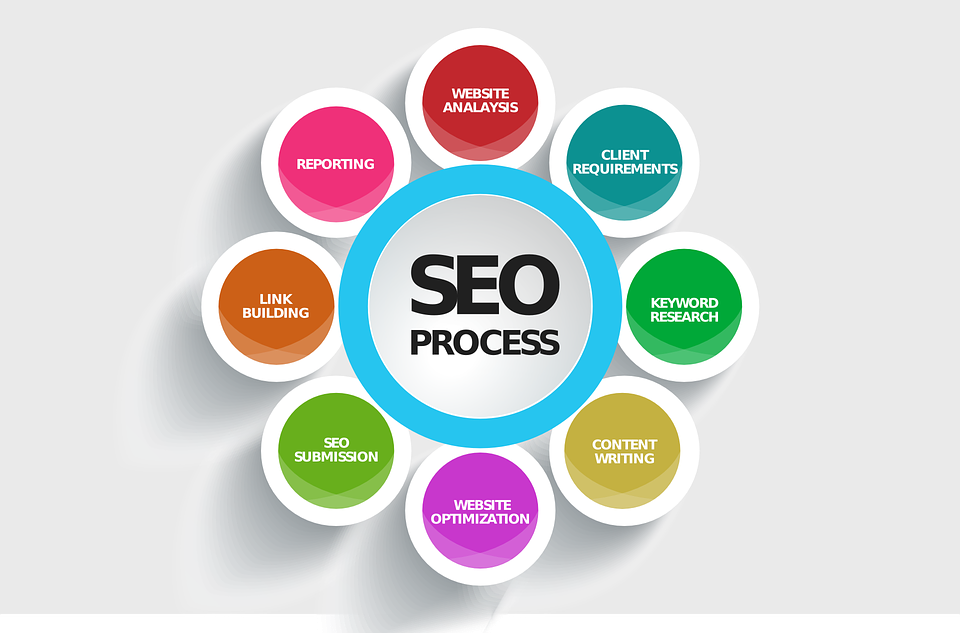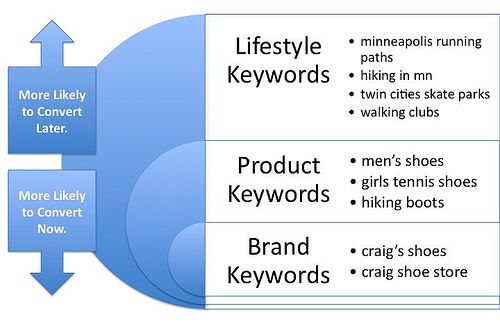A lot of people wonder why search engine optimization (SEO) is such an important thing. The answer it simple – it helps brings more traffic to your website which means more buyers for your product or service that you’re selling online. This is your traffic guide on how to get more visitors with SEO.
Just like you put adverts in newspapers and on television, you use SEO to promote your website online. The second most commonly asked question is, “How can I get more traffic with SEO?”. I have answered this a dozen times but it keeps coming back. So today, we’ll tackle all aspects of SEO and covers tips that will help you generate more traffic with the help of search engine optimization.
No need to call Indiana Jones, this handy little SEO guide can help your quest. Think of it as your own personal Grail diary.
Before we start speaking about more intricate things, let’s talk more about search engine optimization and why it is so very important.
Great SEO makes your business discoverable
The result is pretty obvious, more sales and more business growth. People can’t buy what they can’t see. Neglecting SEO will hurt your bottom line. No matter how great your product or customer service is, you need SEO. Learn the basics and some of the major techniques here.
Not only can SEO attract loads of traffic to your site, there is a way to turbo-charge the SEO strategy to maximize sales. But we’ll get to that later. For the time being let’s try to learn what exactly is SEO.
What in the World is SEO?—An Introduction for Beginners
Most people end up making SEO sound like a bunch of mumbo-jumbo. Sure, the tactics might get a bit technical but the concepts are anything but that. You can safely assume that anyone who can’t explain SEO in simple terms doesn’t know what they are talking about.
SEO is an umbrella-term used to describe all techniques used to increase the number of visitors your site receives from search engines. There are four basic aspects of SEO. The tactics and tools evolve over time but these aspects remain the same. We’ll take a detailed look at them but first let’s understand the need for SEO.
Why Use SEO?
SEO enables search engines to understand the structure of your site. It makes perfect sense if you think about it. Search engine are only programs; they have to operate according to certain rules. These rules help search engines decide which site to show when a user types in a search query.
If your site matches the criteria of the search engine it will be displayed in the results. The search engine is an added layer of abstraction between you and your customer. You have to play according to its rules.
Think of it as a casino full of slot machines and Blackjack tables. You have to stick to the house rules if you want a chance at winning the jackpot. Sure there are ways to cheat (what we call black-hat SEO, which we’ll cover in one of our future blogs); you might even get away with winning big. But unlike the real world this is a casino you have to keep coming back to, and once you are blacklisted, recovering is hard.
An additional roadblock to cheating is that the house gets smarter and smarter every day. There is no shortcut. You have to do the heavy lifting. The good thing is that the heavy lifting is required only once.
The Basics of SEO
Here we venture out into some technical terrain. Don’t worry, everything has been explained in detail and in simple terms. Let the games begin!
Since Google is the most widely used search engine so when most people say SEO, they specifically mean Google Search Optimization. Here we emulate the vast majority of experts out there. Meaning we will talk about Google-specific SEO. However, this greatly depends on your target audience and your geographical location. For example, if you are in China you should try Baidu , which is much bigger in China than Google. Other than this, certain kind of audience prefers other search tools like Bing and Yahoo. Nonetheless, over 80% of Internet users are said to stick to Google.
SEO is based entirely on keywords. Search engines like Google and Bing will rank your website according to keywords. These keywords are the most common terms related to web queries. People using these search engines need relevant results. In order to provide them accurate results, certain filtering criterion is necessary.
Cruddy results will drive down their user experience, therefore search engines are strict when it comes to quality and relevancy.
Here are the basic steps you need:
Most of these changes will seem so minor you will be thinking how in the world these tiny tweaks matter. This is what most beginners think, but trust us, this is what Google has stated in their official SEO Guide.
We used the Google Search Engine Optimization (SEO) Starter Guide as a source for the technical details.
Components of Effective SEO
1. Keyword Research
The first thing you need to do to create a great SEO strategy is to determine what your target keywords will be. Keywords are terms that users search for when looking for something on the Internet. For example, someone looking for a doctor in Las Vegas will not look for ‘I want a doctor in Las Vegas’, instead they will look for terms like ‘Last Vegas doctor’ etc.
Is it Valuable?
You can’t use all of the keywords. You need to target only the most valuable (read relevant) ones. Assessing the value requires a few simple steps:
- Decide if it is relevant to your content
- Does it lead the searcher to your website?
- Can the searcher be happy with what they find on the site?
- Will the traffic lead to sales or any financial rewards?
Once this 4 question test is passed, move on to the next stage:
Perform searches on all the major search engines. You will get a handle on what your major competitors offer and also give you an idea of where you stand. A simple way to judge a keyword’s importance is with the help of advertisements. If a lot of ads show on the search engine result page (SERP) then the search term is highly valued. If the ads appear above the search results, assume that this keyword is lucrative. Meaning the traffic it drives will be more likely to convert.
 The next stage focuses on monetary value. You need to buy a sample campaign. Use Google AdWords or Bing Adcenter whichever you prefer. Buy test traffic for whichever word you want to target. Set the option to “exact match” and point it to a related page on your website. Track the conversion rate and impressions for at least 250-300 clicks.
The next stage focuses on monetary value. You need to buy a sample campaign. Use Google AdWords or Bing Adcenter whichever you prefer. Buy test traffic for whichever word you want to target. Set the option to “exact match” and point it to a related page on your website. Track the conversion rate and impressions for at least 250-300 clicks.
Use this data to figure out the dollar value of each conversion. For example if the ad generates 10,000 impressions per day, which drives 200 visitors to your website. Now if out of these 200, six convert giving you a net profit of $600, it means each visitor is worth $3. If the 10, 000 impressions generate a 20-36% click-through rate you, you will get around 950-2000 visitors every 24 hours. This translates to 1-2 million dollars of profit per year. However, don’t let the numbers impress you right here. Remember the time lag and also the importance of selecting and placing keywords.
Traffic Guide Tools of the Trade
You can use the following set of tools to help you find and judge the value of keywords.
- Google AdWords Keyword Planner Tool
- Google Trends
- Microsoft Bing Ads Intelligence
- Wordtracker’s Free Basic Keyword Demand
We suggest you first get a firm grasp on Google’s AdWords Keyword Planner. It is more than helpful when it comes to finding keywords and determining the cost of online ads.
2. On-Page SEO
On-page SEO means the most important factors of a page should be optimized for search engines. Your information must be easily accessible by both the readers and search engine.
The basic components of each page are:
- URL
- META
- Keyword Density
- Internal and External links
- Content of page
- Title and Header tag
- Image alt text (if included)
All these must be closely tied in with the overall purpose of the page.
Search engines will consider your page to be in an ideal state if you have taken care of the following things:
- Make the entire page very relevant to a target topic. This topic is usually a single object or specific product.
- You have specified the subject a couple of times in the text content.
- Your content is unique and provides valuable information about the topic.
- If there is an overall category page, then link back your sub-category pages (This goes for all the category/sub-category levels you have)
- Link back to the main homepage (include your official logo which can be hyper-linked).
All these factors will make it easy for the search engine to find and categorize your content. We’ll be covering each aspect on-page SEO in detail in the future.
3. Google Interface and Dashboards
A dashboard is a set of widgets which gather all the reporting and performance metrics in one handy location. You will get a bird’s-eye view of your all your SEO and analytics.
You can keep a close look on the performance over time, breakdown the performance according to different time-slots, locations, web-traffic sources, and more.
Dashboards also offer another great advantage. People spending the entire day immersed into metrics and graphs can sometimes forget that the mere mortals outside of the SEO realm might need simple presentation of data. If you need to present results to management or perhaps a client, make a simpler version of your dashboard.
Clients usually want a BLUF (bottom line up front) approach when it comes to results. Only present the most important metrics, usually the ones related to revenue and costs are enough to showcase your efforts.
Google Analytics data and other SEO metrics are easier to understand if you use visualization and graphs. You can easily convert these dashboards into PDFs and create reports on the fly.
Google and Bing both have Webmaster Tools which can be used to:
- Ensure that your site is indexed by the search engine
- Setting the backlinks
- Diagnose and fix any SEO issues
- See which keywords are responsible for driving traffic to your website.
4. Content Marketing
Before you get into details of meta-tags, sitemaps and page load times, you need to focus on an overall content strategy. How are you planning to engage your audience and attract visitors? How are you planning to keep them coming back to your site again and again? What value does your site provide?
The answer to all these questions is content marketing. Content marketing allows you to really think about what you have to offer your customers. Whatever content you create make sure it reflects your brand philosophy. Good quality content means you will garner a lot of backlinks from other sites. The key influencers in your industry will likely take note and interact with you. This is a great learning opportunity, take advantage of it and cultivate these connections.
Use exceptional content and don’t compromise on quality. Also, remember that content does not only mean written content (blog, web content etc.) it means everything on your site from written material to videos to graphics to podcast etc.. All these help in SEO. You can look up detailed guidelines related to image and video content as recommended by Google.
Also, YouTube has now become one of the biggest search engines. YouTube’s videos are also ranked high on Google and other search engine, increasing importance of using a mix of content.
Highly Synched SEO and Content Marketing
Your SEO and content must sync up properly. Here are a few steps which will help you do just that:
- Create high-quality and informative content.
- Lengthy and detailed content ranks higher than short articles
- Try to maintain a consistent schedule when it comes to publishing/posting your content. An ideal frequency is 2-3 times per week, and more based on your site volume.
- If you are using rich media content, ensure that the pages load quickly.
- Factor in your social media strategy when creating content.
- Maintain a good internal linking system.
- Provide an easy way for users to search your website.
Keep in mind that content marketing is NOT SEO. It’s a separate marketing initiative that (when executed correctly) will influence SEO. We’ll also be covering it in one of the future articles.
5. Get Links
Outbound and inbound links can help your website rank better on search engine optimization. While it has not been proven, but it’s believed that if your website received high quality links, Google will rank it higher. This point is important because such links add credibility to your website and help your website look authentic.
Getting links from big websites like Forbes, Yahoo.com etc., is not an easy task. We’ll cover this point in the future articles. However, you can easily get links from websites that allow you to make posts. These include social media sites like Twitter and Facebook. Not only will these websites bring you more visitors, they can also aid in search engine optimization.
6. The Design
Not many experts will tell you this but the overall layout and design of your website also helps in SEO. It’s important because search engine crawlers need a solid design to crawl properly and index all pages. If your pages are not indexed into search engines, they will not show. To make sure the website and all its pages are indexed you should submit your website to search engines and also get a sitemap.
The SEO World Changes Constantly—What Can You Do to Keep Up?
Google routinely rolls out changes to its ranking criteria and other factors. Some SEO experts will tell you that you need to alter your online marketing strategy and website structure in response to these. This is an erroneous view; a strategy of re-acting to changes keeps you one step behind the marketing game. The smart way is to understand the basic quality factors and incorporate those into your SEO efforts. Follow these basic quality and content guidelines from Google and you won’t need to get the SEO-jitters every time you hear rumors about a pending Google algo update.
The most important page quality factors are:
- Content amount and quality
- Website information
- Reputation of the website
- EAT (Expertise, Authoritativeness, Trustworthiness)
SEO is an important tool which should be a part of the online marketer’s toolbox. Even if you are not responsible for the actual SEO part, knowing a little about how it works will put you leaps and bounds ahead. We are hopeful this traffic guide helped you now understand SEO better .






